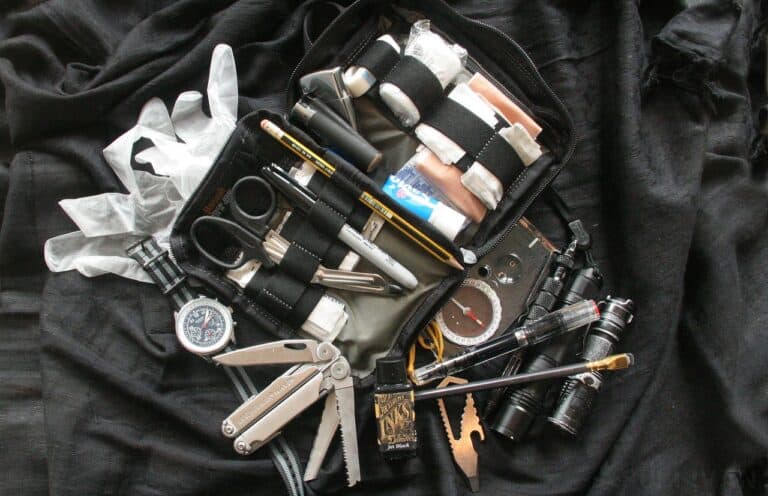
For those new to the business of prepping, you can feel no small amount of intimidation from just how much info you need to learn just to have a clue!

From food long-term storage to fire starting, or land navigation, the sheer breadth and depth of the subject is bewildering, especially if you aren’t coming in from a lifeway that imparted some of the “hard” skills.
I don’t want you to feel overwhelmed and give up on the prospect of taking responsibility for all facets of your own life and survival. Not too long ago, it wasn’t called “prepping”; it was just called life! Life like your great granddad and great grandma lived…
But to help you get a jumpstart on focusing your efforts and energies, we have put together a prepper checklist of the most essential basic preps for beginners.
This list contains the most used and important basic survival items you should have no matter where you live or what kind of disaster you might be facing.
From your home or bug out location to your emergency kit, stock up these items anywhere it makes sense to have them. You can also get this list in PDF format at the end of the article.
Table of Contents
The contents of this list are by design very basic. As mentioned above, no matter where you live and what threat you might have to face, the following items will be useful, even mandatory, but this list cannot cover every contingency or nuance that reflects a prepper’s unique situation where they live.
Depending on your specifics, some figures and recommendations may change. Someone living in an arid desert for instance would probably place even greater importance on water supplies and water filtration than others.
Also keep in mind one of the most basic prepper tenets, starting now: nothing lasts forever, even sitting on the shelf in your cool, dry house. Things wear out or rot away…
No matter the consumable and how well you preserve it, it will eventually go bad or spoil.
Rotating your stocks, that is, using up the items for daily use before they go bad using a first in, first out approach before replenishing will prevent your money and time from going to waste.
For example, if you have some medicine stashed for disaster readiness and it expires or loses effectiveness in six months, you would pull that “stale” bottle of meds and use them before that happens.
Next time you went to the store, you would purchase a replacement bottle and add that to your survival stash. Easy!
And with that, on to the packing list!
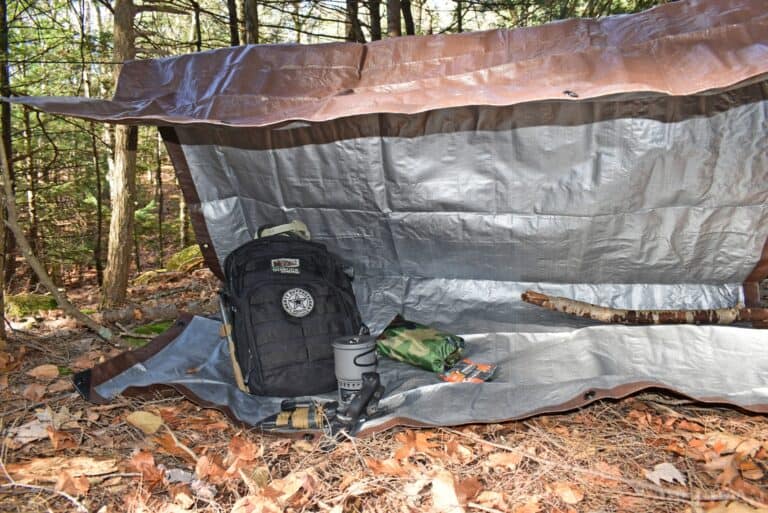
Shelter is the most important survival consideration right after oxygen. Exposure can kill you in hours if bad weather.
The best thing you can do for yourself is to make sure you have some essential shelter gear and supplies on hand even if you plan on riding out the storm in your home: power outages and damage can let the outside in, and the ability to create a smaller.
Disclosure: This post has links to 3rd party websites, so I may get a commission if you buy through those links. Survival Sullivan is a participant in the Amazon Services LLC Associates Program. As an Amazon Associate, I earn from qualifying purchases. See my full disclosure for more.
A more survivable micro-climate inside your home is invaluable. You should get:
The ability to start a fire isn’t something to only worry about in wilderness survival scenarios. With the power grid down, you’re llikely to rely on using wood, pellets or some other fuel to heat yourself and to cook food.
As for heating, there are a few popular options you can try:
Water is next in importance right after shelter. Dehydration and death by thirst will kill you in three days or so, and you’ll be delirious and incapacitated long before that when you cannot get water.
It is vital that you have a ready drinking supply, potable water, and the tools to produce clean, drinkable water from other sources, man-made or otherwise.
Be sure to pick up:
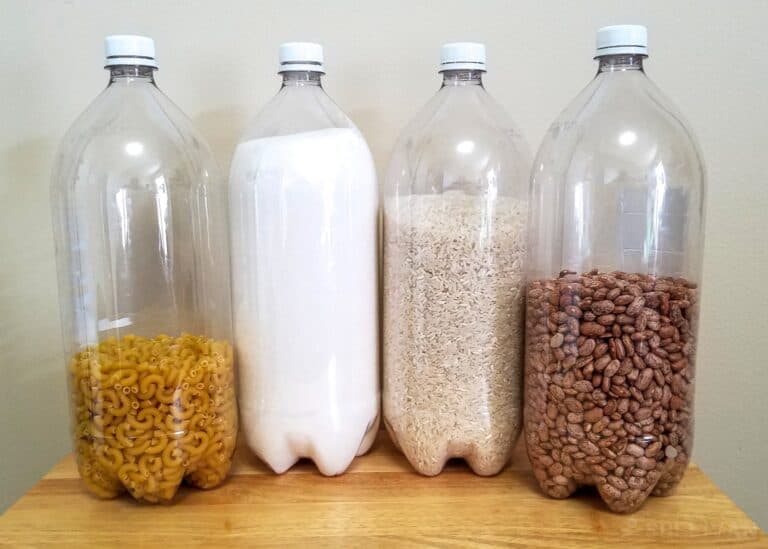
During a disaster survival scenario, you’ll need calories for fuel to keep getting work done. Food, especially hot, good food, is a huge morale booster during rough times…
Just starting out prepping, you can easily and painlessly start building your emergency food supply by adding an item or two each time you make a trip to the grocery store.
Something as small as three square meals for each person for three days will cover for 90% of the things that might happen.
You want about 2,000 to 2,500 calories per person per day for high-activity fueling, but you can ration to stretch an existing supply and go for much less.
Grab your grocery list and add the following:
Also, you may consider getting a portable camping stove. This depends a bit on your approach to survival and your location.
If you live in an area where wood is plentiful I would question whether you need a stove. However, if you live in a desert or plains area where wood fuel might be scarce go for a multi-fuel stove so that you can be as flexible as possible when it comes to finding more fuel once you run out.
There are many options that will work with gasoline, diesel, aviation fuel, and more.
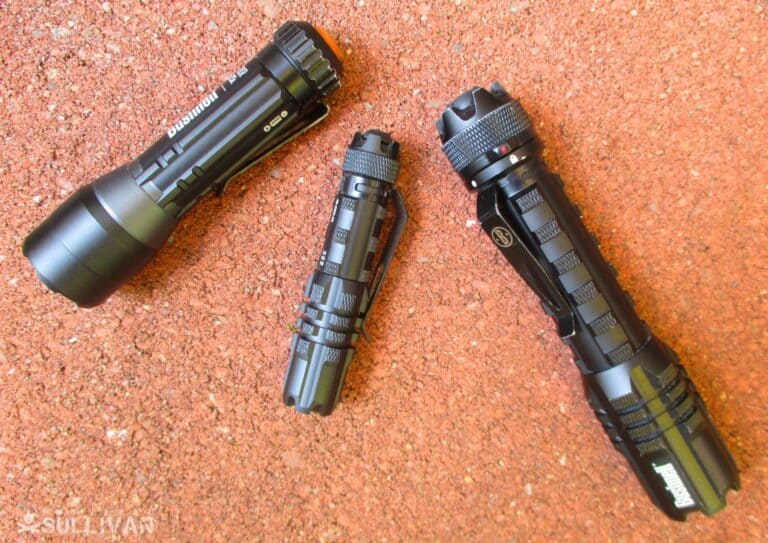
You must assume that the power will go out and not be coming back on for the duration of the crisis. Your go-to buddy for dealing with it is the humble flashlight.
Also consider headlamps as they will allow you to work hands-free with no hassle and without holding a light between your teeth. Lights of all kinds are good for signaling, too!
Add these luminous wonders to your cache as soon as you can:
You’ll need the right kind of clothes in the aftermath of a disaster, for protection from the elements and also the environment. Make sure you have good clothing ready to go appropriate to all seasons of your home area.
Tough, fast-drying clothes and sturdy boots and gloves will give you an advantage over the sharp, painful things you’ll deal with in the wake of a disaster.
Be sure to stock your stash wardrobe with:
While you’re at it, don’t forget to get a few wool blankets, and put one in your car’s trunk, so you can keep yourself warm without the engine running.
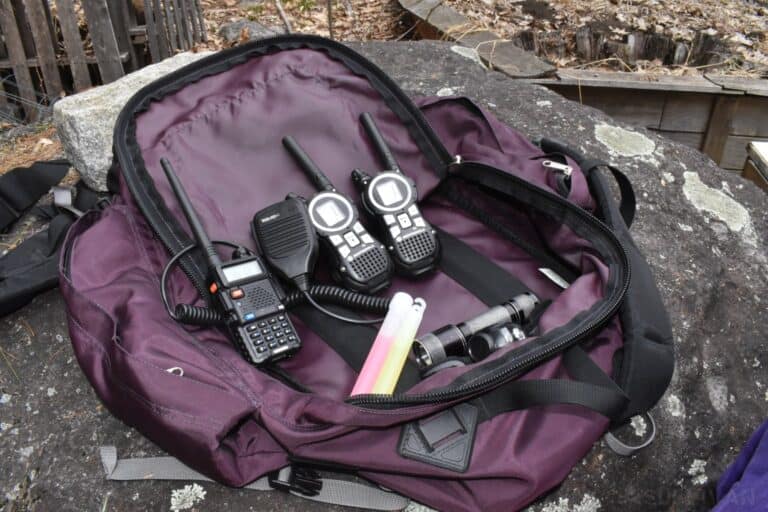
You don’t need to get your ham radio license just yet but you should have a few means of sending and receiving communications.
Keeping in touch with members of your group or family and also the outside world is essential to receive actionable news updates in a timely fashion.
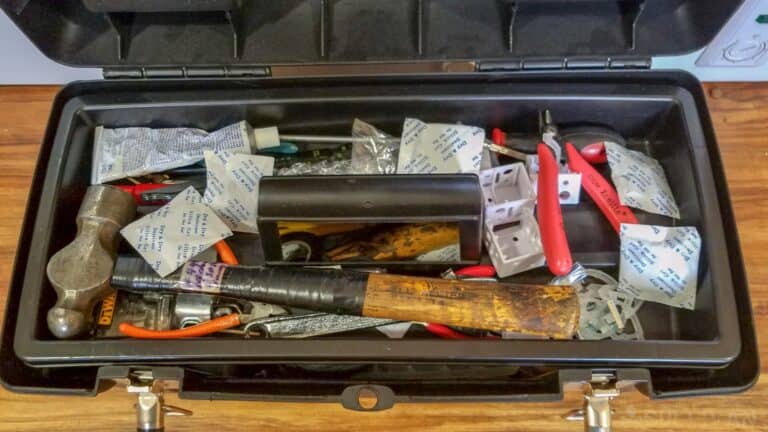
You just can’t call yourself a prepper without a good stash of survival tools. You don’t need to be Mr. or Mrs. HGTV or the second coming of Tim Taylor, but you should have a goodly assortment of tools for taking care of all kinds of repairs and improvised construction or digging yourselves and your neighbors out of rubble.
Manual tools are the way to go here. Power tools gobble too much power. See to it that you get:
| Big framing hammer | Hand saw |
| Hacksaw | Axe |
| Shovel | Prybar |
| Utility knife | Small mechanics kit with sockets and ratchets |
| Duct tape, duct tape, duct tape! | Hank of Paracord or strong accessory cord. |
| All-purpose spray lubricant. | Matches |
| Lighter | Vise grips |
| Screwdrivers | Nails, assorted sizes |
| Screws, assorted sizes | Multitool, for on-the-go fixing |
| Sewing kit |
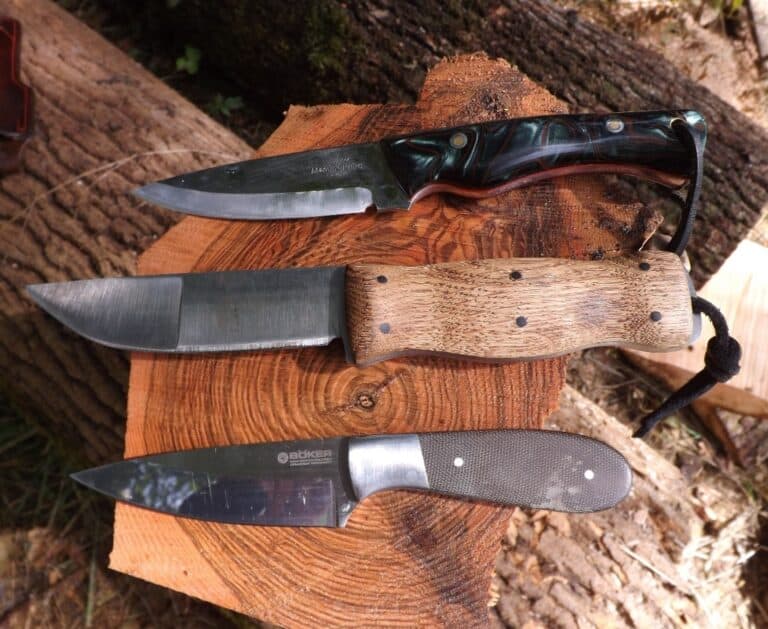
You just can’t call yourself a prepper without a good survival knife! ideally, you will need:
You will need several ways to protect yourself, and keep in mind that not all of them will be available at the time of the attack:
Also consider means to protect your body such as body armor, tactical vests, chest rigs, etc.
You should be prepared with medical supplies to handle everything from trauma to minor injuries and symptoms resulting from illnesses.
Note you will need proper professional training to have the skills and confidence to effectively intervene in even a minor medical emergency, and for the record, you are far, far more likely to need your medical skills than your weapon skills to save the day. Plan accordingly.
Stock your med bag with:
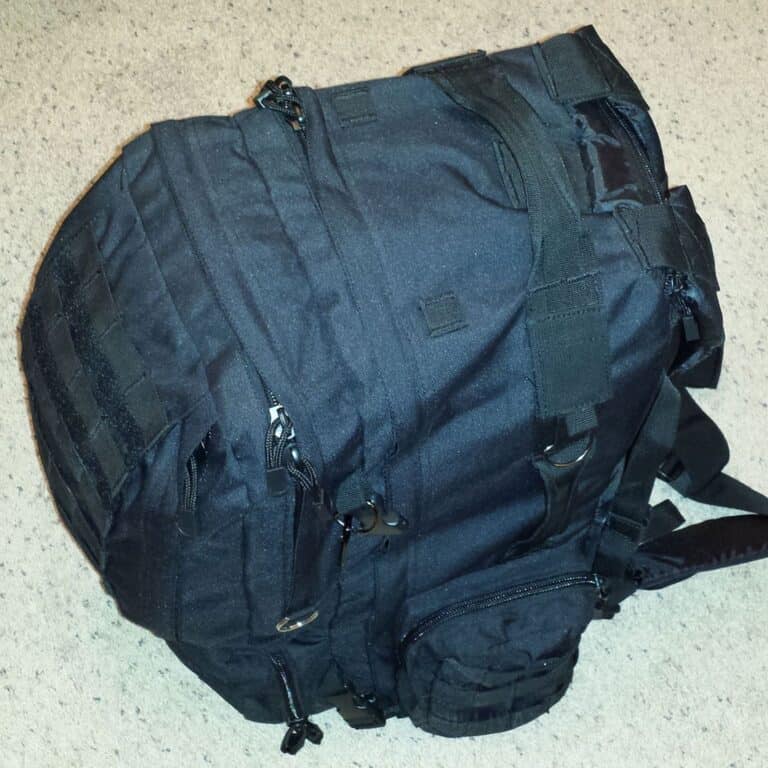
Your bug-out bag, or BOB is one of the most commonly discussed topics in prepperdom.
Your bug-out bag is supposed to be stocked with all of the items we listed above, or at least a representative sample of them, in order to allow you to grab it and go when things look really bad and you cannot wait things out where you are.
If you cannot afford to have two sets of gear, you should make it a point to have a BOB nearby your stash so you can load and go in a hurry.
Your bug out bag should be:
You can find a comprehensive list of all the essentials to fill it with here.
A bug out vehicle is another crucially important prep. But don’t worry, it doesn’t have to be some specialized and extremely expensive off-road monstrosity. Your daily driver can be your bug out vehicle as long as it can reliably get you to where you need to go and you plan for some contingencies accordingly.
The first step is keeping your vehicle well-maintained and servicing it at regular intervals. The second step is keeping the following gear with it so you’ll be prepared for problems while on the road.
No matter where you are going, and no matter why, you’ve got to know how to get there. Don’t rely on your own sense of direction or on visual landmarks alone. Remember, the landscape might be radically altered by whatever event has occurred.
This is where navigation gear can save the day.
To avoid bordemon after a collapse, and to keep your mind off the unfolding tragey, consider having:
I know this sounds like a lot but consider the following as well:
Buying a bunch of gear won’t make you safe. Your existing skillset can make or break you when disaster strikes, so it pays to get ready now.
Beyond skills, there are a few more basic, painless preps you should put in place now so you aren’t scrambling when the sky gets dark and the mountains start rumbling.
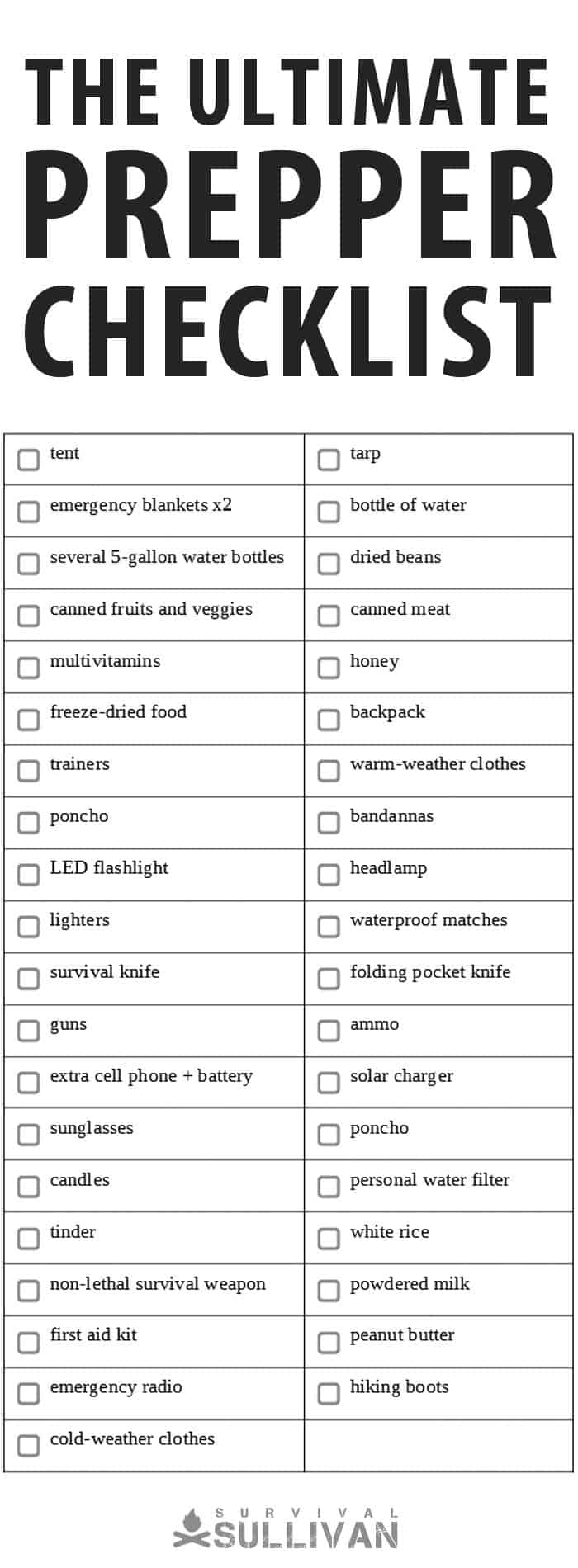
Of course, this is only the beginning. Everyone has their own needs and concerns. Some people have to work around disabilities or elderly family members. Some people have very small children. Some people are alone or have greatly limited budgets.
The best way that I’ve found to start getting survival items and making preparations is to just start. There is always something you can do, even if it is practicing a skill, reviewing a map of your best escape routes, or adding one lousy can of peaches to your stash.
Should you cheap out on these things? I wouldn’t. They might save your life one day, you cannot afford for them not to work when you need them most. That being said, many good quality items can be had for modest prices today.
With so many online reviews, blogs, and videos, you can easily get a sense of the ones that give you the most bang for your buck. And if you’re patient enough to wait for discounts, you’re likely to get some pretty sweet deals!
So, are you ready to get started putting together your survival packing list? You can print this PDF checklist and tick off each item as you get it. Oh, and don’t forget to pin this to your favorite Pinterest board for later!
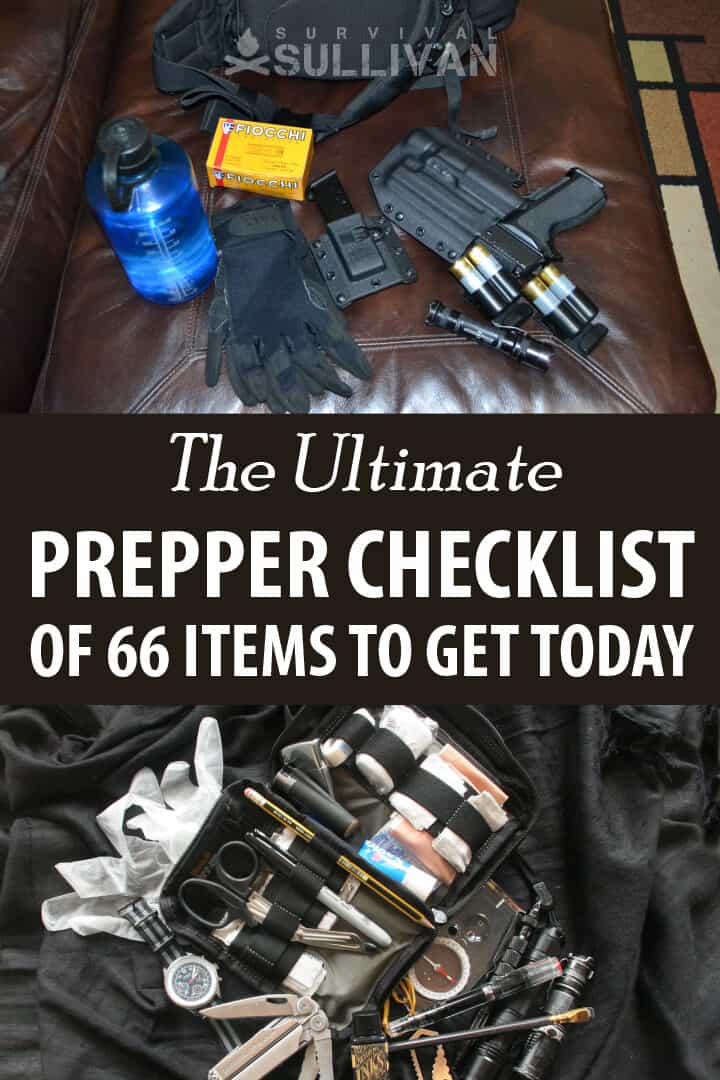
My dad was military. My grandfather was a cop. They served their country well. But I don’t like taking orders. I’m taking matters into my own hands so I’m not just preparing, I’m going to a friggin’ war to provide you the best of the best survival and preparedness content out there.